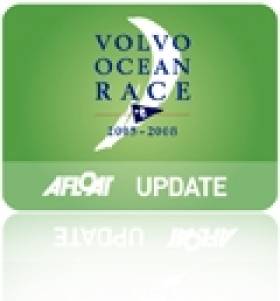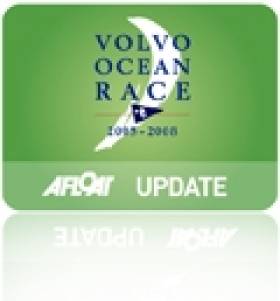Displaying items by tag: Lisbon
#VOR - Lisbon in Portugal has been chosen as the destination for a flying start to the next edition of the Volvo Ocean Race in 2017-18.
Hailed by organisers as one of the most successful host cities of the VOR in recent years, Portugal’s capital city staged hugely popular stopovers in 2011-12 and 2014-15 following transatlantic legs.
But this time it's been have decided that a short, sharp ‘sprint’ leg from Alicante would be the ideal way to begin the round-the-world challenge.
Race organisers also announced yesterday (Tuesday 10 May) that a new Boatyard facility was opening with immediate effect in Lisbon to service the fleet for the next race and provide the base for an upgrade to all the Volvo Ocean 65 boats from October this year.
The Boatyard at Lisbon will complement the established maintenance centre in Alicante that will continue to be available for teams as their Mediterranean training and support base.
“We have a double reason to celebrate our close ties with the great maritime capital city of Lisbon today," said Antonio Bolaños López, acting chief executive of the VOR before Mark Turner takes the reins next month.
“Firstly, we know that Lisbon will provide a packed and vibrant host city for our fleet after a thrilling first leg from Alicante, ensuring the next race in 2017-18 will begin in real style.
“Secondly, Lisbon offers us the perfect location to set up a second Boatyard operation on top of the existing provision we enjoy in our home city of Alicante.”
Boatyard head Nick Bice said he was delighted to open a new centre for future teams, with perfect training conditions in the Atlantic so close by.
“Lisbon has endless possibilities for us," he said. "The building we’ll be using for The Boatyard is an old fish market. If you were to design and build a facility to undertake the upgrades to the boats, you wouldn’t be able to design it better than what’s already there in the docks in Lisbon.
“The training options are almost limitless. You can go up around the corner, around Cascais and be virtually guaranteed wind at any stage. Equally, you could train in the Tagus River to practise in light air scenarios.”
The fleet for the 13th edition in 2017-18 will be upgraded in the Lisbon facility later this year and early into 2017.
Lisbon joins Alicante, Cape Town, Hong Kong, Auckland, Newport in Rhode Island, Cardiff, Gothenburg and final destination city The Hague on the route for the 2017-18 race, with more cities to be announced in the coming weeks.
#VOR - Almost seven days into Leg 7 of the 2014-15 Volvo Ocean Race and there's finally been a split in the fleet, as Team SCA paid for mistakes along the Atlantic exclusion zone earlier in the week.
"The rest of the fleet is closer to the centre of the high pressure from the Azores," writes the all-women team's onboard reporter Anna-Lena Elled.
"The first boat out on the other side will get the new pressure and take off like a bullet for the finish line. We have to come up with something different."
That difference could be speed: catching higher pressure on the outside to make up their lost ground and nip at the heels of the leaders some 38 nautical miles ahead.
And with their current speed 25% faster than the top two teams, and with 9.4nm gained in the last few hours of this morning (Sunday 27 May), that plan appears to be paying off – but only three days of racing lie ahead before Lisbon.
Elsewhere, in the main pack there are two races going on: for the current leg, which as of this morning has Team Brunel in the narrow lead, just half a mile clear of MAPFRE, with Dongfeng Race Team another mile behind; and between Dongfeng and Abu Dhabi Ocean Racing, separated by just six points in the overall standings.
With Abu Dhabi currently behind the top three boats by 12nm – and Team Alvimedica between them – the next three days will be crucial to secure the best position for points.
Key to doing that in this incredibly tight and short leg is "the favourite Volvo Ocean Race game this time round", as Dongfeng skipper Charles Caudrelier describes the AIS tracking system.
Designed with safety at sea in mind, AIS is now integral to VOR race strategy, as it allows boats to determine the speed and direction of vessels within 20nm – meaning reactions to other teams' moves can be much more than an educated guess.
"By the end of the race I will have without doubt spent more time in front of this game than on deck, and certainly more than at the helm," says Caudrelier.
Things will only get more complicated to manage when Team Vestas Wind rejoin the fleet at Lisbon – their yacht now fully repaired and headed from the Persico boatyard in Italy to Portugal by road in time for the fleet's arrival in port.
But back to the race at hand, and a leg win for Brunel would be sweet relief for skipper Bouwe Bekking, who this week passed the point where nine years ago to the day his then boat movistar was swamped by the Atlantic, forcing him to abandon ship.
Lisbon Added to VOR Race Route for 2014-15
#VOR - Lisbon will again feature in the Volvo Ocean Race route after striking a two-race deal with organisers.
The Portuguese capital - which made its VOR debut in last year's edition of the race, hosting the start of the penultimate leg - will again welcome the VOR fleet in 2015 after the North Atlantic crossing leg from Newport in Rhode Island, and will repeat the celebrations in 2018.
"What Lisbon achieved in the last race was remarkable when you think that the city was making its debut," said VOR COO Tom Touber.
Lisbon is the eighth host port to be announced for the 12th edition of the round-the-world yacht challenge, following the return of Abu Dhabi to the calendar a few weeks ago.
Entry List Announced for Tall Ships Races 2012
#TALL SHIPS - Eighteen vessels are on the entry list for the 2012 Tall Ships Races which are set to conclude in Dublin Port next August.
The list is dominated by British entries, with all nine UK tall ships expected to sail the third and final leg from A Coruña in northern Spain to Dublin.
Tall ships from Russia, Poland, France, Ecuador, Bulgaria, Latvia, Estonia and Belgium will also be in the fray when Ireland's capital hosts the final port of call for the 2012 races, presented by Szczecin in Poland and organised by Sail Training International - a charity established to harness sail training to develop and educate young people regardless of nationality, culture, religion, gender or social background.
The first leg of the 2012 races kicks off in Saint-Malo, France on 7 July with ships racing to Lisbon in Portugal (till 21 July); Cádiz in southern Spain (21-28 July) and A Coruña (28 July-12 August) before the final leg.
Dublin will be hosting the Tall Ships Races for the first time since 1998. Earlier this year Eamonn O’Reilly, CEO of Dublin Port Company, said he was “delighted to welcome the Tall Ships Races to Dublin Port" in 2012.
Since the announcement the port has already played host to the British tall ship Tenacious and the Norwegian vessel S/S Statsraad Lehmkuhl.
From Thursday 23 to Sunday 26 August 2012 as many as 100 ships are expected to arrive in the port and Docklands area for an event that includes a four-day festival programme of music, food and fashion showcases, markets, street theatre, water sport and water-based activities.
The weekend will also feature activities unique to the races including a crew parade, prize-giving event and a parade of sail.
Are you looking to get involved in Dublin's hosting of the Tall Ships Races? Check out the following links:
Become a trainee www.dublintallships.ie/trainees/
Take part as a volunteer www.dublintallships.ie/volunteers/
For further information see www.dublintallships.ie or e-mail [email protected]
Entry List for the Tall Ships Races 2012:
Akela (Russia)
Black Diamond Of Durham (UK)
Dar Mlodziezy (Poland)
Etoile Polaire (France)
Guayas (Ecuador)
Johanna Lucretia (UK)
John Laing (UK)
Kaliakra (Bulgaria)
Lord Nelson (UK)
Maybe (UK)
Moosk (UK)
Pelican Of London (UK)
Pogoria (Poland)
Rona II (UK)
Spaniel (Latvia)
St Iv (Estonia)
Thermopylae Clipper (UK)
Tomidi (Belgium)
Dublin Is Fly-Cruise Hub as 'Journey' Heads for Iberian Sun
Tonight's departure is for Holyhead, where the call to Anglesey also covers tours of Snowdonia, the impressive castles of Conwy, Caernarvon and Harlech and a stop to Bodnant. Following the Welsh call she is to visit Cobh. Other calls are to Bordeaux (overnight), Bibao, Gijon,Vigo and the final port of call is Lisbon on 7 September where passengers will remain in their cabins for an overnight stay. The next day there is a scheduled tour of the Gulbenkian Museum, the Jeronimos Monastery and Sintra.
On one-day the ship will spend the entire day at sea which will enable passengers to indulge further of the facilities such as the casino and entertainment in the theatre, for more click HERE. Fares for the Irish passengers of the 10-day cruise/11-day holiday started at €2,062 per person (cruise-only) based on the lowest grade twin cabin. After completion of the cruise in Lisbon they will take a flight to return to Dublin.
Azamara Journey formed part of the eight-strong series commissioned for Renaissance Cruises which collapsed a decade ago. They were built by Chantiers de l'Atlantique in St.Nazaire and were uninspiringly named as R One, R Two etc with the R Six now the re-named Azamara Journey.
As August and the high-season draws to a close that doesn't' stop the cruiseships calling as over twenty more are due in Dublin before the season closes. In total the port this year has handled some 90 cruiseships and 160,000 passengers. A further 65 callers so far are scheduled for 2012.
- Cobh
- Dublin Port
- Cruise Liners
- Princess Cruises
- Holyhead
- Anglesey
- Ports and Shipping
- Cobh Cruise Terminal
- Port of Dublin
- Cruise Liner news
- Trinity College
- Cruise ships
- Ocean Princess
- Azamara Club Cruises
- Azamara Journey
- Renaissance Cruises
- R6
- Powerscourt Gardens
- Gulbenkian Mseum
- Lisbon
- Western European Cruises
- Dublin cruise terminal
- Welsh cruise calls
- Welsh castles
- R Six
- Chantiers de l'Atlantique




























































